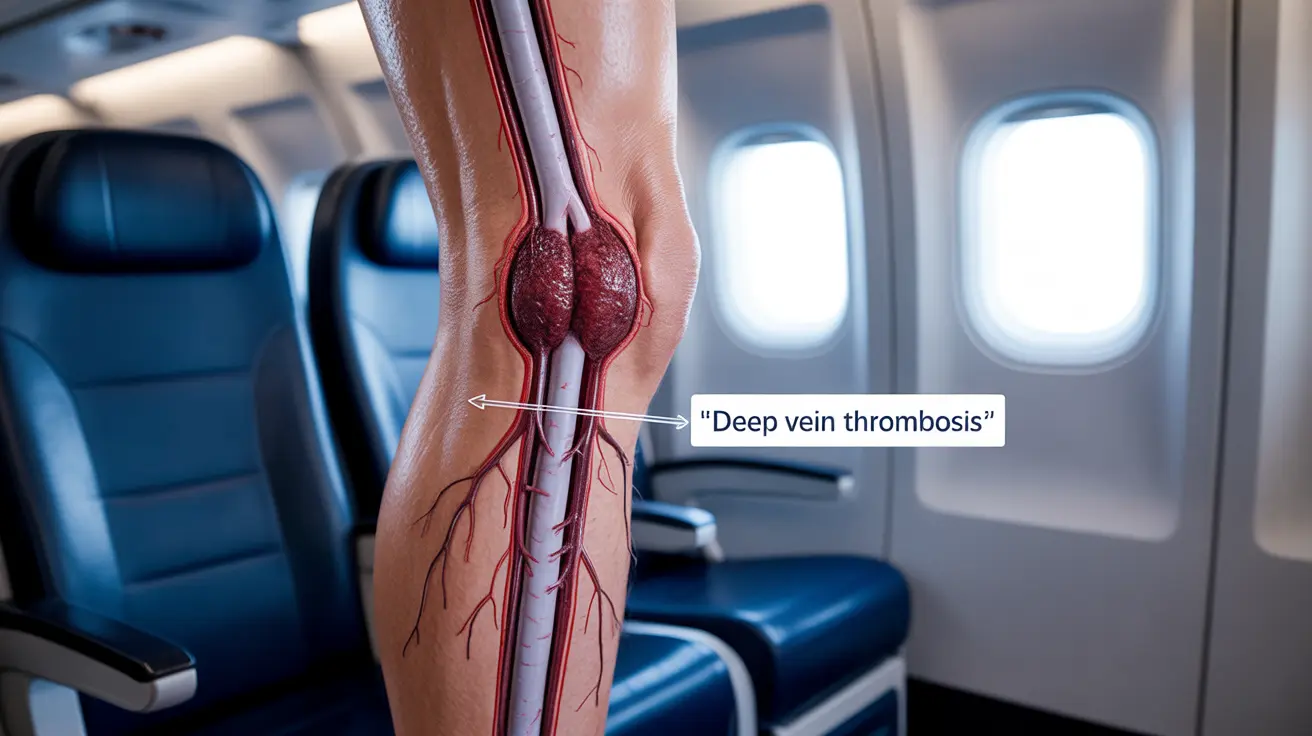Air travel, particularly long-distance flights, can increase the risk of developing blood clots, a condition known as deep vein thrombosis (DVT). Understanding the symptoms and prevention strategies is crucial for maintaining your health during and after air travel. This comprehensive guide will help you recognize warning signs and take appropriate preventive measures.
Understanding Blood Clots and Air Travel Risk
Extended periods of immobility during flights can lead to poor blood circulation, especially in the legs, increasing the risk of clot formation. When blood moves slowly or pools in the deep veins, typically in the legs, it can form clots that may have serious health implications if left untreated.
Common Symptoms to Watch For
Being able to identify potential blood clot symptoms after flying is crucial for early intervention. Key warning signs include:
- Swelling in one leg, ankle, or foot
- Warmth in the affected area
- Skin redness or discoloration
- Pain or tenderness, especially when standing or walking
- Cramping in the affected leg
- Visible surface veins
Understanding Pain Patterns
Blood clot-related pain typically differs from routine muscle soreness. It often feels like:
- A persistent cramping sensation
- Pain that worsens when walking
- Tenderness when touching the affected area
- Discomfort that doesn't improve with rest
Risk Factors for Travel-Related Blood Clots
Certain conditions and circumstances can increase your vulnerability to developing blood clots during air travel:
- Recent surgery or injury
- Obesity
- Pregnancy or recent childbirth
- Hormone replacement therapy or birth control pills
- Advanced age
- Previous history of blood clots
- Cancer or cancer treatment
- Limited mobility
- Genetic blood clotting disorders
Prevention Strategies for Long Flights
Taking proactive steps can significantly reduce your risk of developing blood clots during air travel:
Before Your Flight
Prepare for your journey by:
- Consulting your healthcare provider if you have risk factors
- Wearing loose, comfortable clothing
- Considering compression socks or stockings
- Staying well-hydrated before travel
During Your Flight
Maintain good circulation while flying by:
- Walking the aisle every 2-3 hours when safe
- Performing seated exercises (ankle circles, leg stretches)
- Staying hydrated with water
- Avoiding alcohol and caffeine
- Wearing compression stockings if recommended
When to Seek Medical Help
Some symptoms require immediate medical attention. Seek emergency care if you experience:
- Sudden shortness of breath
- Chest pain or discomfort
- Coughing up blood
- Rapid heart rate
- Dizziness or fainting
- Severe leg pain or swelling
Frequently Asked Questions
What are the common symptoms of a blood clot after flying?
Common symptoms include swelling in one leg, warmth, redness, pain or tenderness, and cramping. The affected area may feel firmer than surrounding tissue.How can I tell if leg pain after a flight is caused by a blood clot?
Blood clot pain typically feels like a persistent cramping sensation that worsens when walking and doesn't improve with rest. Unlike typical muscle soreness, it's often accompanied by swelling, warmth, and skin color changes.What are the risk factors that increase the chance of blood clots during air travel?
Key risk factors include obesity, recent surgery, pregnancy, hormone therapy, advanced age, previous blood clots, cancer, limited mobility, and genetic clotting disorders.How can I prevent blood clots when flying on long flights?
Prevention strategies include moving regularly during the flight, performing seated exercises, staying hydrated, wearing compression stockings, and avoiding alcohol and caffeine.When should I seek emergency medical help for a suspected blood clot after flying?
Seek immediate medical attention if you experience sudden shortness of breath, chest pain, coughing up blood, rapid heartbeat, dizziness, or severe leg pain and swelling.




